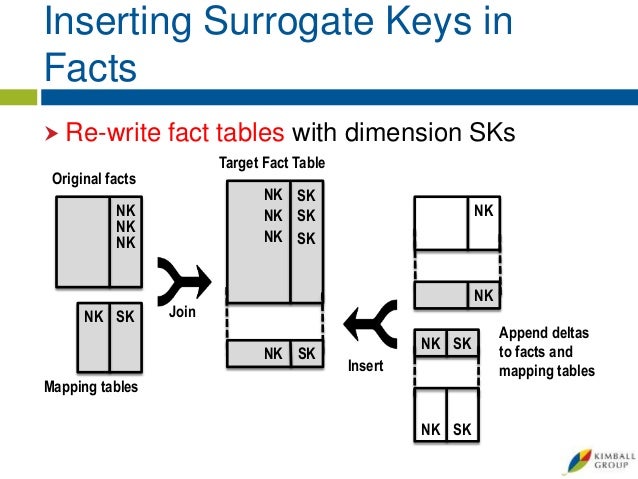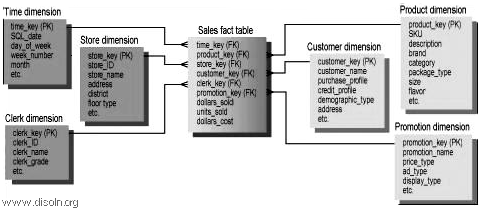Data Warehouse Surrogate Key Generation
Good Data Warehouse uses its own surrogate keys for dimension tables instead of natural key coming from a source. This way you can e.g. Implement slowly changing dimensions later in the process. This time I will demonstrate how to generate surrogate keys using Databricks with Azure Synapse Analytics (f.k.a. Azure Data Warehouse). Jul 20, 2019 Surrogate keys are widely accepted data warehouse design standard. In this article, we will check data warehouse surrogate key design, advantages and disadvantages. What are surrogate keys in Data warehouse? If you are a data warehouse developer, that you might be thinking what is surrogate key? How and where it is being used? In a data warehouse, a surrogate key is a necessary generalization of the natural production key and is one of the basic elements of data warehouse design. Let’s be very clear: Every join between dimension tables and fact tables in a data warehouse environment should be based on surrogate keys, not natural keys. It is up to the data extract.
Vast is an Ocean,So is vast the World of Knowledge. With my diving suit packed, loaded with imaginative visions, and lots of curiosity, started diving deep into the world of BODS.Lots of work is going on. Got attracted towards the “Key_Generation” transform and was fascinated at its features.Now it was time for me to fuse and adapt myself into its world.
THE KEY_GENERATION TRANSFORM:-
This transform is categorized under the “Data Integrator Transforms”. This generates new keys for source data, starting from a value based on existing keys in the table we specify.
Data Warehouse Surrogate Key Generation Download
Jun 24, 2012 Generating Surrogate Keys With SSIS. A surrogate key is an auto generated value, usually integer, in the dimension table. It is made the primary key of the table and is used to join a dimension to a fact table. Among other benefits, surrogate keys allow you to maintain history in a dimension table.
If needed to generate Artificial keys in a table, the Key_Generation transform looks up the maximum existing key value from a table and uses it as the starting value to generate new keys.
/obtenir-les-cles-hma-key-generator.html. To get access to all the features the user has to pay a license fee and receive a key. How's that usually solved?. That key will then be entered into the application to 'unlock' the full version.As using a license key like that is kind of usual I'm wondering:. How can I generate the key and how can it be validated by the application?.
The transform expects the generated key column to be part of the input schema.
STEPS TO USE KEY GENERATION TRANSFORM:-
Data Warehouse Surrogate Keys
Scenario:- Here the target data source for which the keys is needed to be added, have certain newly added rows without a Customer_ID. This could be easily understood in the following snap:-

Our aim here is to automatically generate the keys(Customer_ID) in this case , for the newly inserted records which have no Customer_Id. Accordingly we have taken the following as our input (the modified data without Customer_ID)
INPUT DATA (to be staged in the db):-
TARGET TABLE(which contains the data initially contained in the source table before the entry of new records in the database):-
THE GENERATED DATA FLOW:-
CONTENT OF SOURCE DATA:- (containing the modified entry alone)
CONTENT OF QUERY_TRANSFORM:-
CONTENT OF THE KEY_GENERATION TRANSFORM:-
THE CONTENTS OF THE TARGET TABLE PRIOR JOB EXECUTION:-
The JOB_EXECUTION:-
THE OUTPUT AFTER THE JOB EXECUTION:-
We can now see from the output how Keys have been generated automatically to those records which did not have the Customer_ID initially.

I explored this little process of the Key_Generation transform, and it seems a savior at times when huge amount of data have the missing entries(wrt to the keys or any sequential column fields).
Now its time to go back to the surface of waters…….